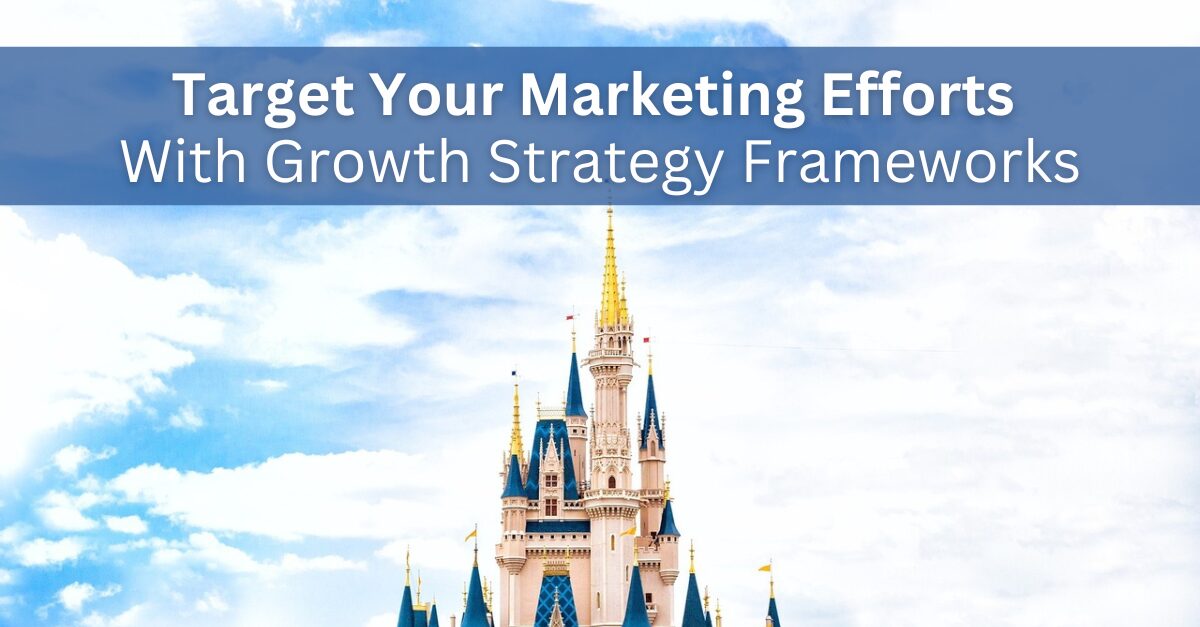How can you determine where to focus business growth – especially in these unconventional times? When you’re using Upstream Marketing, there are three key levels of strategic decision-making and corresponding frameworks to consider. Let’s jump right in!
3 Growth Strategy Frameworks
Each of the three levels are described in the image below; here’s a quick summary. (For the purposes of this article, we’ll focus specifically on Level 2…)
Level 1: focuses on whether to pursue “closer in” or “further out” opportunities. Here’s where you will ask if your focus should be on the core business, adjacent areas, or diversification?
Level 2: utilizes traditional market segmentation methods (such as geographic, demographic, behavioral, and attitudinal) to group customers.
Level 3: this is the domain of upstream marketing – this level directs where to focus precisely—which customers, needs, and offerings—drawing on a proprietary customer demand framework.
Level 2 decision frameworks include commonly used methods of customer segmentation, i.e:
- Geographic
- Demographic
- Behavioral
- Attitudinal/needs-based
Using The Walt Disney Company as an example, these methods are explained more in detail below.
4 Segmentation Approaches at Walt Disney
- Geographic segmentation is used when language, culture, ethnicity, and other factors are present. Beginning with Disneyland Resort in California and Walt Disney World Resort in Florida, Disney Parks has expanded to include Paris, Tokyo, Hong Kong, and Shanghai. Disney delivers a consistent value proposition across all geographies, slightly modified to reflect local audiences.
- Demographic segmentation uses age, income, household makeup, and life stage to define segments. In the example of Disney, they have created four hotel and resort tiers that appeal to different demographic targets (Value, Moderate, Deluxe, and Disney Vacation Club Villas). The Grand Floridian, its flagship resort, commands room rates of $1K+ per night – compared with Value rates of $100 to $200. Likewise, Disney offers a similarly magical experience, with the same attractions, characters, and fun factor – though at different value levels that appeal to different demographics.
- Behavioral segmentation separates a market by shopping and buying behaviors. Disney uses behavioral segmentation to determine marketing and pricing strategies for its theme park tickets. Sophisticated data analytics are employed to carefully manage ticket pricing, to encourage extended resort stays and provide a series of annual passports that combine valuable discounts, offers, and special events.
- Attitudinal segmentation is also known as psychographic segmentation. It segments customers based on attitudes, motivations, and needs. Disney conducts market research with its highly involved attitudinal group, commonly referred to as “Disneyphiles.” This elect group gets to visit parks multiple times a year – and they get to eat, sleep and breathe anything Disney…fun! By gleaning deep insight into Disney’s most loyal segment, the entire organization benefits.
In Marketing, Know the Right Place to Look…
Many companies rely on demographics and firmographics (for business customers) for growth planning, because these groups are easier to find and measure. Proponents of these methods assert, “If you can’t measure it, you can’t manage it.”
It’s true that these approaches may work for certain downstream activities. But they are a poor fit when insight into consumer attitudes, motivations, and needs is vital. Remember, just because “the light is better there” – doesn’t mean it’s the place to look.
Ready to learn more about all of the growth strategy frameworks? Enjoy a complimentary chapter of our insightful book, Upstream Marketing. Access your download here.





















Follow EquiBrand